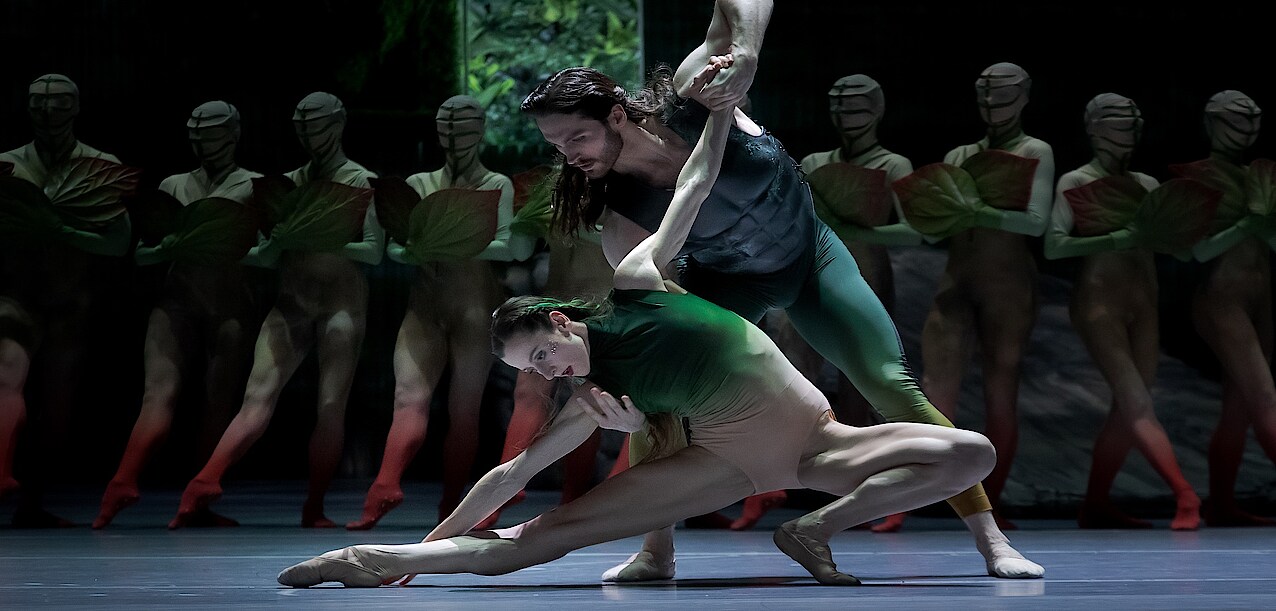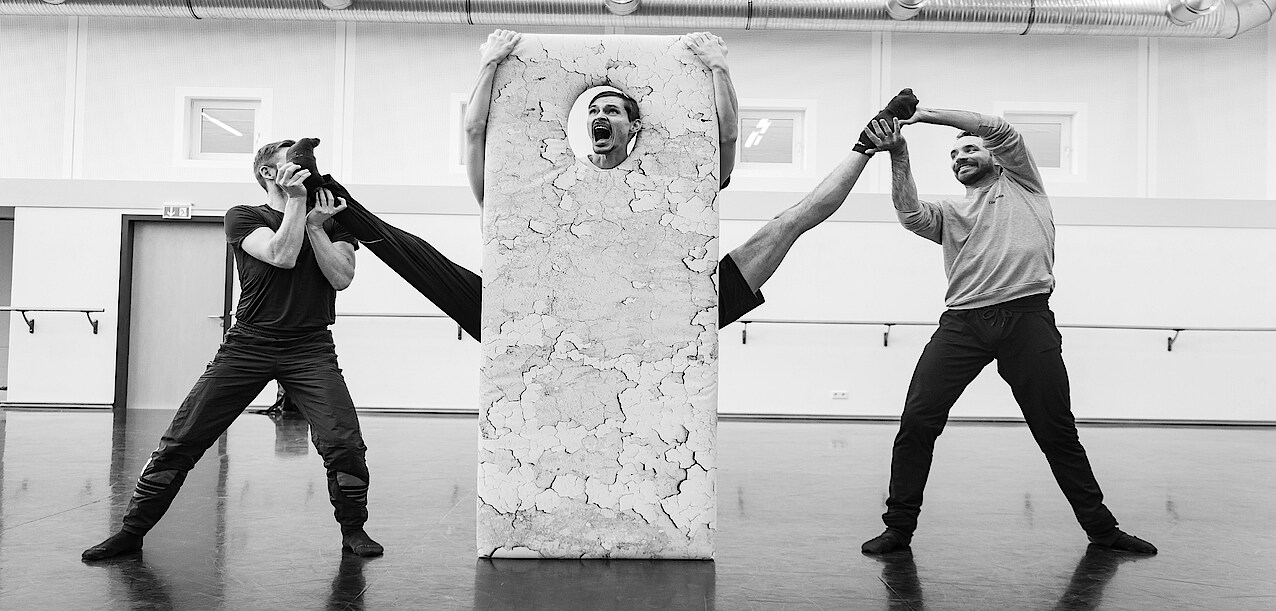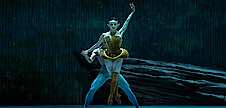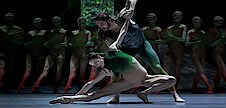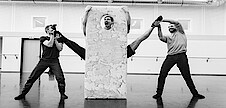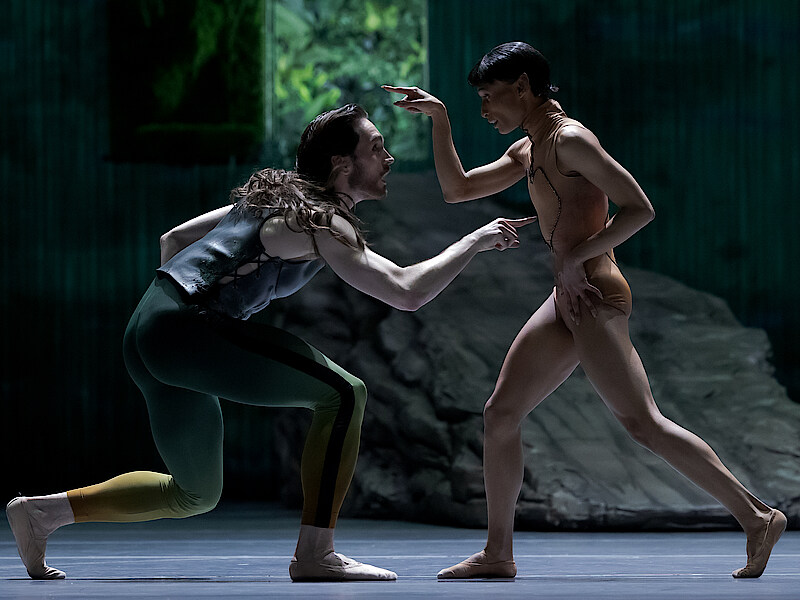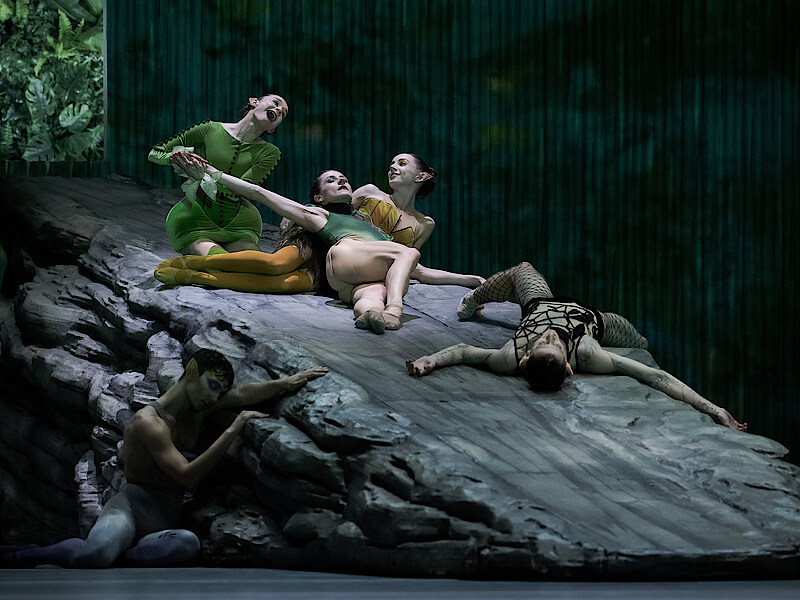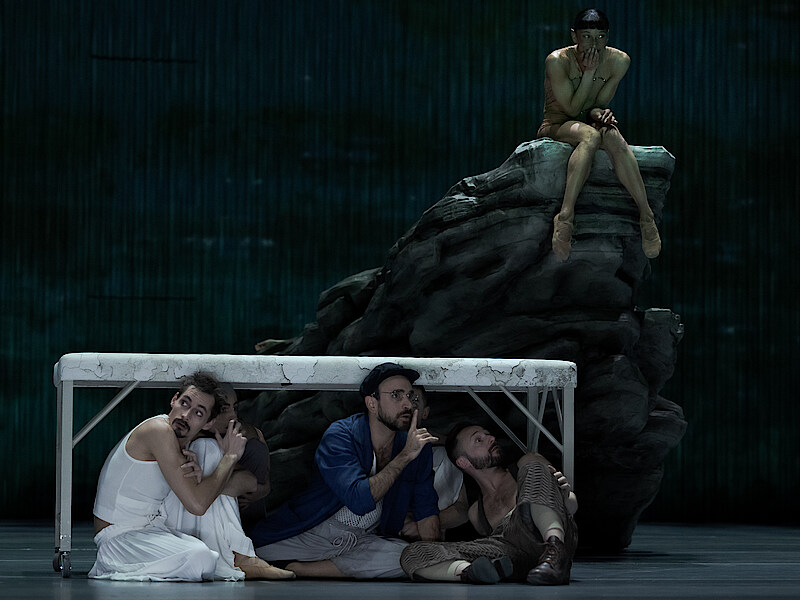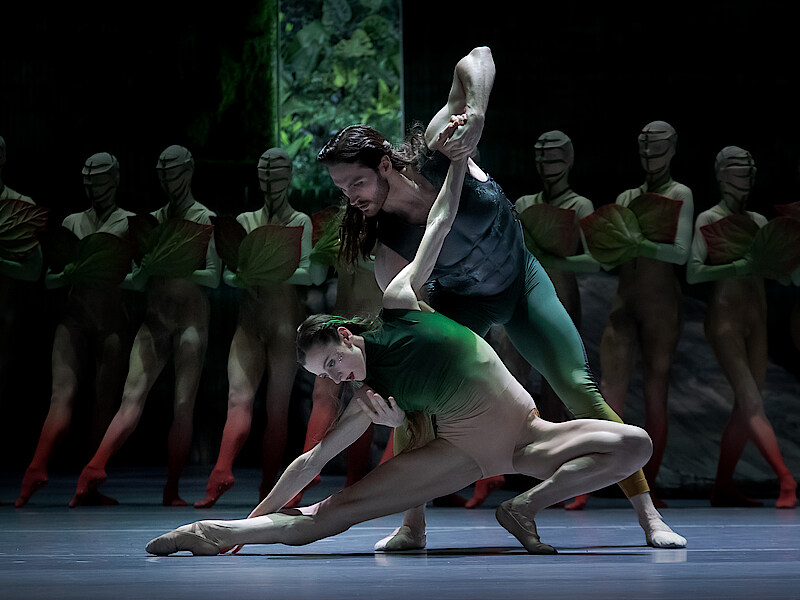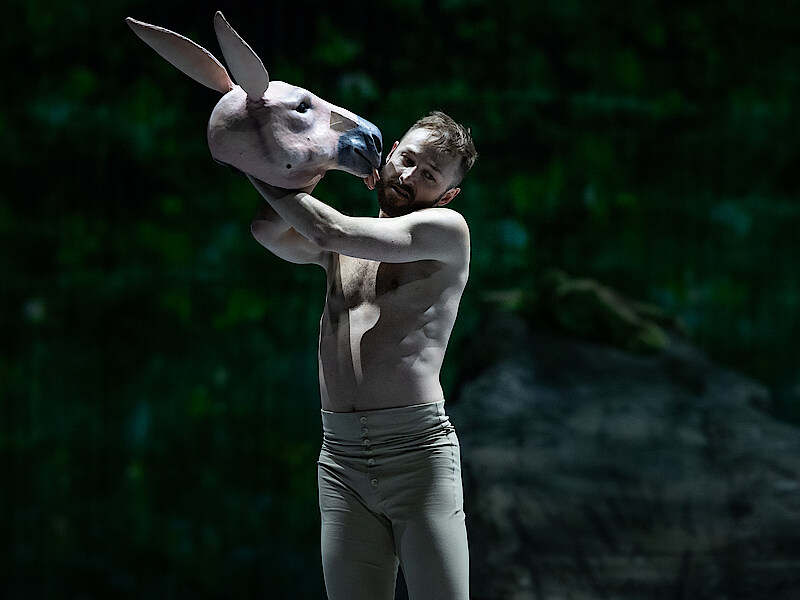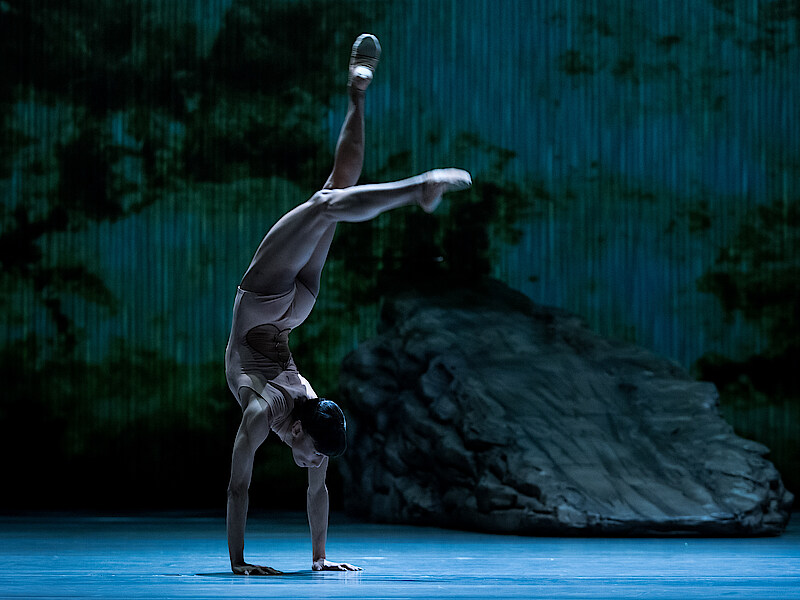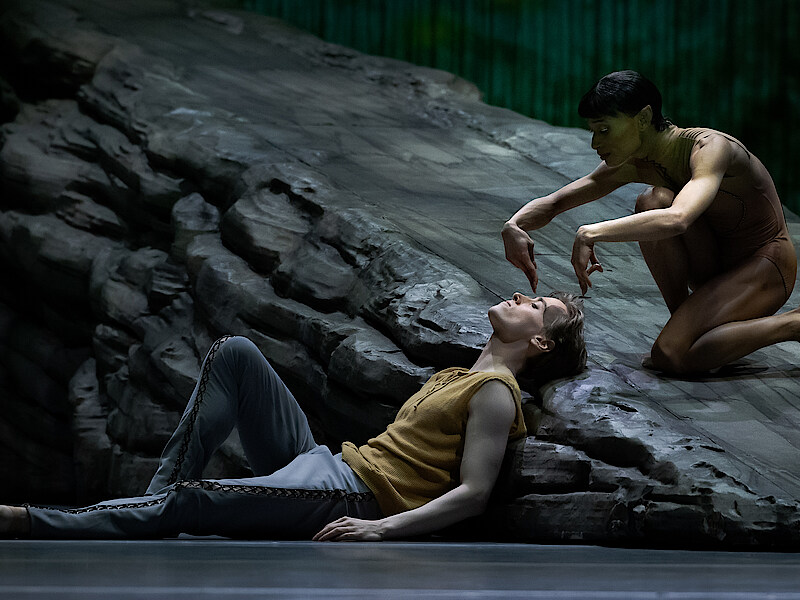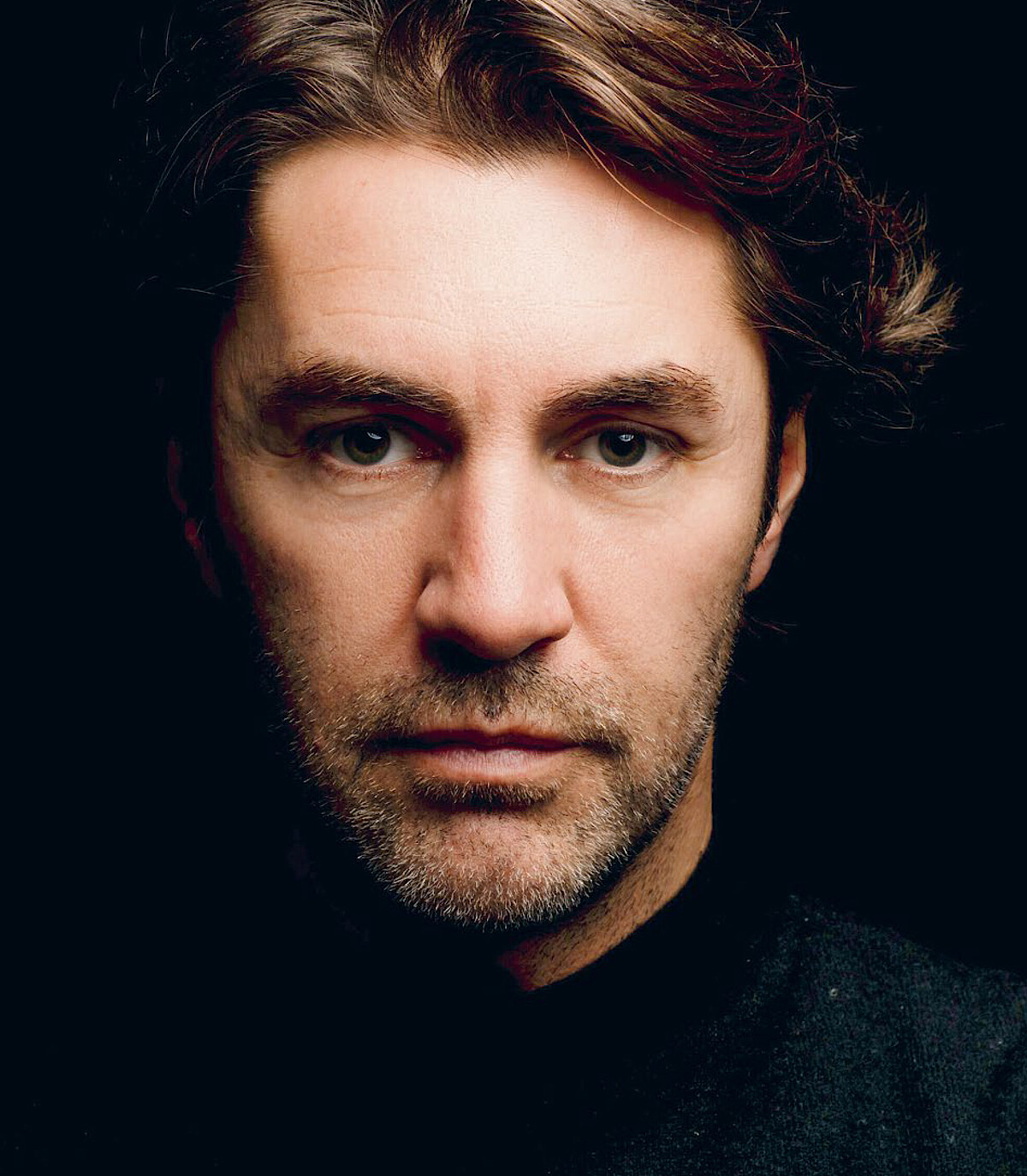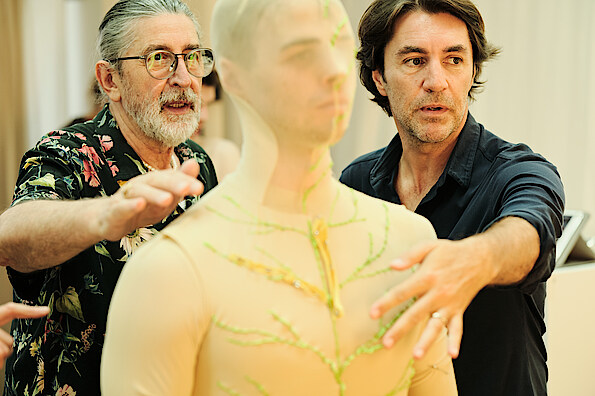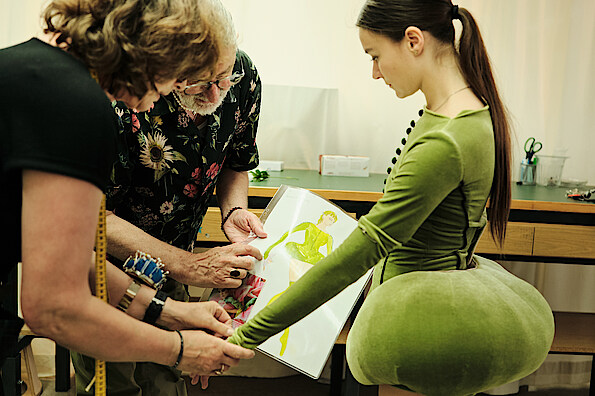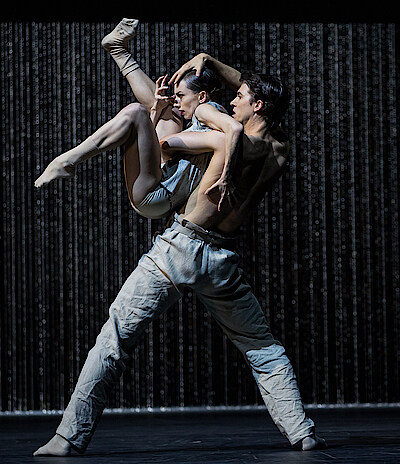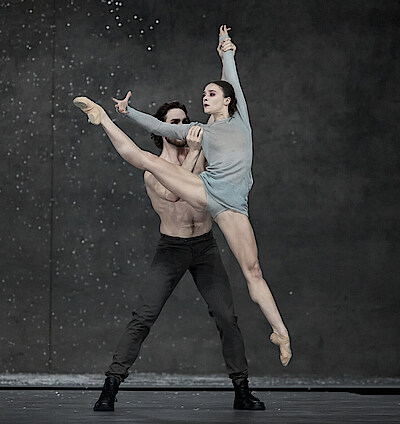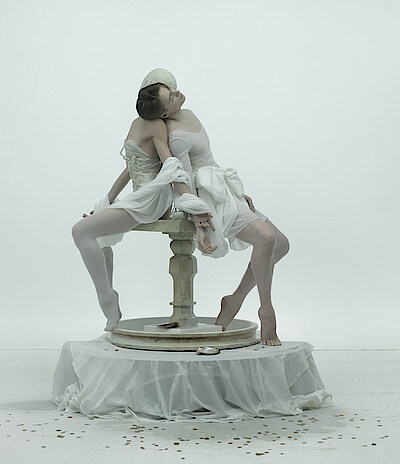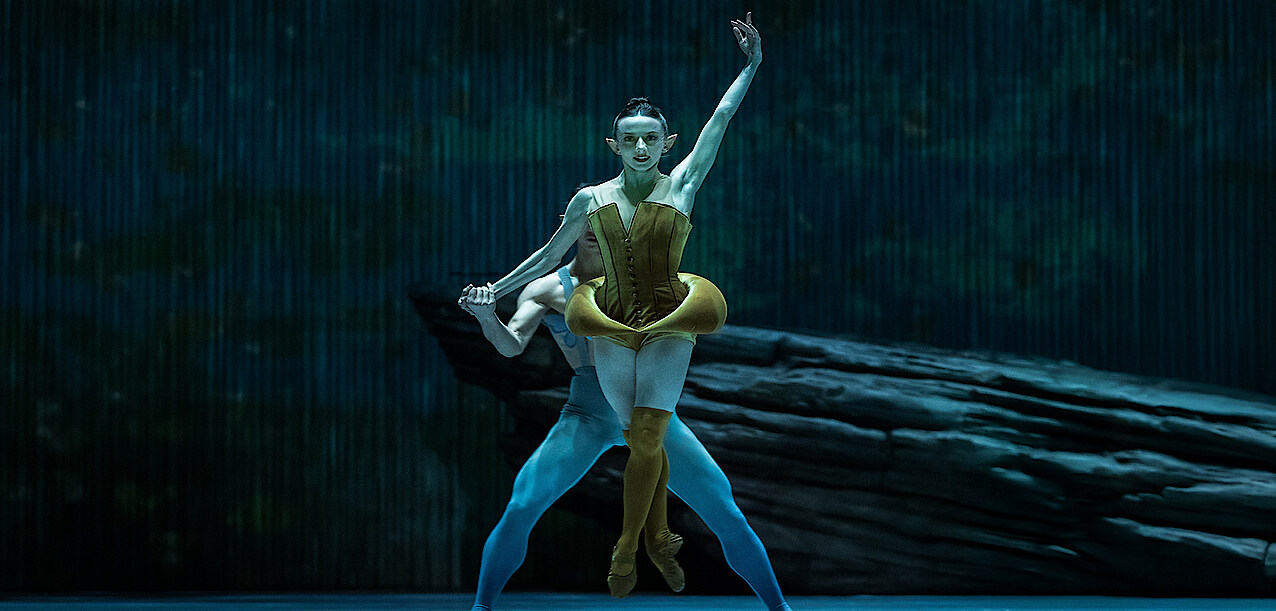
Children and young people under the age of 18 pay €10 for any seat at family performances.
Even before the performance, children and young people can prepare for their ballet visit in workshops together with their parents. These age-appropriate introductions offer insight into the storyline, allow them to get to know the characters, and include dancing short scenes from the piece. The workshop takes place two hours before the performance begins.
Registration required
Phone: 030 34 384-166
Email: contact@tanz-ist-klasse.de
«I want them to fall in love with the piece.»
Edward Clug in conversation with Christian Spuck
CS (Christian Spuck) What inspired you to choose Shakespeare’s A Midsummer Night’s Dream as new production for the Staatsballett Berlin?
EC (Edward Clug) So far all the stories, Peer Gynt, Faust, The Master and Margarita and The Nutcracker, that I’ve interpreted in full length ballets, share the element of the unseen and the unreal. I feel attracted to that imaginary world, especially when it interacts with ours. When that happens, the banality of the reality becomes sublime and transforms something that is akin to ‹magical realism›. A Midsummer Night’s Dream is entirely about that, and it simply feels like the right choice for my next adventure!
CS You have many different layers in this play: you have the world of the fairies; you have the real world; and you have a play within a play. So it’s also about theatre itself. A play within a play can be a challenge...
EC When you do a play without spoken words, you always have a problem. In this case, I have one more. A Midsummer Night’s Dream is a very special work, and therefore I will have to approach it in a different way. The works that I’ve mentioned before are all built on the fundamental conflict between ‹good› and ‹evil›. In this case we witness the conflict between ‹being in love› and ‹not being loved› when the roles are reversed. It sounds confusing, and this is what Shakespeare does with great skill: he is confusing his characters, lets them struggle in disorder before establishing the final order. To provide the same amusing and rich experience that the readers of the play have, I have to invent a narrative of the expected with unexpected means.
CS Are you choreographing Shakespeare’s A Midsummer Night’s Dream or are you making a new dance piece which is inspired by it?
EC At this point, as much as I can, I will follow Shakespeare, but to a point where I have to let go and come up with my own understanding and needs. I feel for the viewer, it is nice to rely on the story and to rediscovery it in a different medium.
CS You are one of the rare choreographers that create story ballets. I can see your work, and I understand what’s it about. How do you do that? Do you create the scenes as a director, or do you start as a choreographer?
EC Certainly, as a director. I try to create a stage concept out of the story. Each time, I imagine a place where this is going to happen, but this is not necessarily always the starting point. Before I enter the studio and begin the work with the dancers, I explore the piece with my team multiple times. This frame is needed to prepare for the action, and despite the vigorous preparations, I try to remain open for the unplanned.
CS When we think about A Midsummer Night’s Dream, everybody is thinking also about the famous music by Felix Mendelssohn Bartholdy. I know that you are working together with the composer Milko Lazar. What are your plans?
EC I even had the whole first scene already worked out in detail to Mendelssohn’s famous violin concerto. I was very sure for a few months. Then, the more I explored the music together with Milko Lazar, the deeper we developed our work and understood that we wanted to let go of Mendelssohn. I’m sure that Milko’s music will be an inspiring landscape for our story and will deliver the suitable support for the various situations and the overall atmosphere.
CS I know the music of Milko Lazar very well. His music is theatrical, surprising and powerful. So, of course, I’m excited that you work with Milko again and also with the orchestra of the Deutsche Oper Berlin. How does the collaboration between you look like?
EC We have been working together since 2008, which comes down to a good 16 years of collaboration. We started in the beginning with one, maximum two instruments. Our worlds were in fact very minimalistic, and we thought that we do not need more than that. That changed with Faust. I knew Milko’s symphonic works, which were not designed for ballets, but for concerts and large orchestras. So, partly our inspiration took off from there. Sometimes, I come with a theme or a motif, and he comes up with samples, each one maybe one minute long, and then we discuss them. Milko develops them further and then we discuss them again. Later, we name them and find the appropriate place for them in the ballet. When I imagine a scene, I also kind of hear a certain tune or rhythm for that particular moment.
CS I remember he came to Zurich and was in the studio with you and played piano or some of his recorded pieces. So it’s really a collaboration during the creative process. And in what kind of world will you take us with your costumes and set design? Is it set in the present or a mix of different time periods?
EC We try not to be too specific in terms of period and, also not too illustrative in terms of the narrative. Probably the appearance is closer to nowadays.
CS You are one of those choreographers who is not afraid of big productions. Is that a challenge for you at all and how does that influence your creativity?
EC Coming here today, I experienced something very pleasant in this big opera house. I felt like a beginner. With that comes a certain excitement of working in a place you have never been before. Your senses start to boil and your ambitions are awakening. If this place impresses me already in the first moments, I will do something to impress it back.
CS How did you get into dance?
EC Well, I would say that is also connected with the history of Berlin, which in a way was also ours in Romania. So, back in the Eighties, when I started ballet school, it was not my wish but my father’s, who was in love with art...
CS Your father sent you to ballet school? That’s the first time ever, I’ve heard that! Normally parents, especially fathers, seem to be against that.
EC He was unusual and probably sometimes a bit too open-minded for the communistic authorities in that little town, where I was growing up. He was, in a way, the engine when it comes to culture. He wanted to be a musician and had a rock band. He also acted in an amateur theatre group, like one of the mechanics in A Midsummer Night’s Dream, except he did not impersonate Pyramus but George Dandin in Molière’s eponymous play. I remember I was crying when he was beaten up in that role. So, I grew up in that free-spirited family. My father wanted me to become an artist under all circumstances. When I was ten years old, he asked: «Would you like to go to ballet school in Cluj-Napoca?» I liked the idea to go to a big city. So, I took the exam, and after two weeks, I was attending ballet school with harsh conditions during the Ceausescu times. I almost got kicked out because in the beginning everything seemed funny to me. After three months, I started to take it more seriously. Then I heard about the dancers who managed to escape the system, famous dancers, who ended up in the U.S., in Germany, in France, in the West in general.
That was my motivation. At eleven, I knew I wanted to finish ballet school just to escape the country. This is why I mentioned Berlin earlier, because the West was absolutely surreal to us. It was kind of a fairy world with Coca-Cola and jeans. It was an aspiration to literally seek for freedom.
CS In what mood would you like the audience leave after having seen your A Midsummer Night’s Dream?
EC I want them to fall in love with the piece.
Quoted from the 24/25 season brochure.
Imagination and Craftsmanship
The Visual Dreamscapes of Costume Designer Leo Kulaš
A Midsummer Night's Dream is one of William Shakespeare’s most famous and beloved works, exploring the power of love, the confusion of human emotions, and the magic of imagination. Starting 21 February 2025, Edward Clug, Ballet Director of the Slovenian National Theatre Maribor, will bring his version of this classic to the stage with the ensemble of the Berlin State Ballet. Set to music specially composed by Milko Lazar, Clug’s production offers a world premiere with a contemporary perspective on Shakespeare’s wonderful comedy. Costume designer Leo Kulaš creates visual dreamscapes to complement the production.
In the costume department of the Deutsche Oper Berlin, a buzzing and creative atmosphere prevails. Clothes racks filled with fabrics in various colours are everywhere, while parts of the room are sectioned off with white curtains serving as changing areas. Production manager Maria Ubaldino Abreu and her team, equipped with tape measures around their necks and pincushions on their wrists, tend to the dancers, who arrive every 30 minutes to try on prototype costumes for the upcoming major production, Edward Clug’s A Midsummer Night’s Dream. The enchanting visual world of this ballet begins to take shape on this June morning in 2024, well ahead of its premiere on 21 February 2025. On the tables by the window lie dozens of colourful watercolour sketches by costume designer Leo Kulaš, whose Croatian heritage informs his work. Known for his beautiful figurines and meticulous attention to detail, Kulaš explains: «When I sketch, I’m always thinking about the finished costume and how it will be constructed. The designs aren’t just important for me but for everyone involved in the project – the director or choreographer, the set designer, the tailors, the lighting designers, and, of course, the performers, in this case, the dancers. When my designs are submitted and approved, I can relax for a moment.»
For the costume department, however, the real work begins at this stage. It takes nearly 13 months from the submission of the designs to the premiere. A Midsummer Night’s Dream features around 40 different costumes, with a total of 91 characters needing outfits just for the first cast. The real challenge, however, lies in bringing Edward Clug and Leo Kulaš’s fantastical vision to life on a reasonable budget and with sustainability in mind. Maria and her team often turn to existing materials from the theatre’s stock to minimise new production.
Choreographer Edward Clug has also travelled to Berlin for the fittings. He shares a long-standing creative partnership with Leo Kulaš, which began with their work on productions by theatre director Tomaž Pandur at the Slovenian National Theatre Maribor, where Clug has been Ballet Director since 2003. «Our ideas intertwine in many ways,» says Kulaš, «but of course, we each draw on our own experiences and knowledge.» The idea of staging A Midsummer Night’s Dream emerged spontaneously during discussions between Clug, Kulaš, and set designer Marko Japelj about their next major production for the Berlin State Ballet. «We were immediately captivated by the possibilities this play offers for stage, costume, and choreography,» recalls Kulaš. The story’s layers – the mythological world of Theseus and Hippolyta, the modernity of the young aristocrats Lysander, Hermia, Helena, and Demetrius, the magical forest realm of Oberon and Titania, and the working-class artisans led by Nick Bottom – provide rich opportunities for creative exploration. Themes of longing, rivalry, deception, and jealousy drive the plot across these intersecting worlds, whose boundaries blur (thanks in part to a magical love potion), until couples are swapped, and the line between reality and dream vanishes.
The passion and familiarity between Clug and Kulaš are evident in their collaboration. «What do you think of this green for the top? Maybe a bit darker?» Kulaš asks, holding up a Pantone swatch book with 300 shades. «No, more like this...» Clug’s concentrated gaze lands on one of the watercolours: yes, that green is perfect. It’s now up to the costume workshop to dye the fabric to match that exact shade. Nearby, dancer Emma Antrobus tries on an elf costume. Maria stands with her before a mirror, not entirely satisfied with how the dramatically protruding back transitions to the thigh. «What do you think of this line, Edward? Is it good, or should we go with the other side’s version?» Clug examines, decides, and Kulaš nods. Emma moves, her body stretching in exaggerated motions. No, it’s not quite right – a seam needs to be tightened to prevent the top from shifting during performance.
Kulaš takes his inspiration primarily from the ideas and wishes of directors and choreographers. «I think a lot about the stories and themes,» he explains. «But it’s also crucial to consider the ballet dancers and ensure the costumes support their movements rather than hinder them. I prefer natural materials with added elastane for flexibility.» His decades of experience designing for opera and ballet guide him, but he draws inspiration from everywhere. «All of life inspires me. I collect old magazines and books, and I’m constantly observing the world. Yes, I even keep an eye on fashion trends.» For A Midsummer Night’s Dream, Kulaš weaves elements from antiquity, Shakespeare’s era, and the modern day into a seamless whole. «I enjoy creating costumes that unite these styles. Ballet costumes have their rules, but sometimes you need to push boundaries, experimenting with new materials and modern technology like laser cutting and digital printing.» These methods are especially prominent in crafting the forest’s visual aesthetic, filled with imaginative insects and leaves. Holding up a large, transparent wing crisscrossed with fine veins – part of a dazzling dragonfly costume – Kulaš and the team experiment with different headdresses and ornamental placements. Another forest inhabitant, a hybrid of human and plant, tries on oversized green leaf-hands. Clug immediately begins choreographing expressive arm movements that evoke rippling foliage. But how to attach the leaves naturally and securely? The team has many details to finesse.
The fittings mark a major milestone for Kulaš and the costume department. From now on, each costume will be tailored to fit every dancer, with all pieces ready for the first dress rehearsal. Even then, adjustments and refinements will continue. «I always embrace challenges and strive to satisfy the entire ensemble. Until I’m completely convinced by an idea, I’m not content. Perhaps I’ve grown a bit too critical over the years... But, of course, the costumes must also captivate the audience.»
Excerpt from Ballet Newspaper No. 3, text by Maren Dey.
Interview with Leo Kulaš conducted by Katja Wiegand and Maren Dey.
